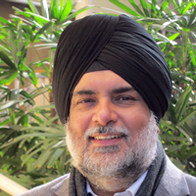
Dear Readers
Seven-year-old Pradyuman Thakur was brutally murdered by a bus conductor in Ryan International School in Gurgaon on September 8, 2017. School security, since that day has been one of the most hotly discussed subjects by the media, schools, parents, local police, municipal authorities and the general public.
The security automation industry meanwhile, has been busy installing CCTV cameras and systems in schools and school busses all over the country as an outcome of the knee jerk reaction by government authorities directing the educational institutions to install video surveillance systems. The government apparently wants to demonstrate that it has taken cognizance of Pradyuman’s murder and that it is determined to avert school crimes. However, it may not fully succeed in its objective as it is not laying down the steps that should naturally lead up to the installation of these devices and their correct usage to deliver their intended value.
To identify the vulnerable points in a school one would have to conduct a security survey in order to analyse the risks and identify the weak areas. Also, is CCTV the only device that can minimise the identified risks? What about things like access control systems, guard tour systems, fire extinguishers, fire alarms, intrusion alarms, lighting (especially for boarding schools) and most important of all, what about SOPs and processes?
Expertise and knowledge is required to figure out all these things, and define the SOPs and processes. Implementing them and running them efficiently requires a full time person who is in-charge of school security. In my opinion, the authorities should specify that schools having more than a certain number of students must employ a full time Security Officer, a person who has the knowledge and skills to discharge this specialised function. Now, that there are security skills that have been identified and are being taught by organisations which partner with the National Skills Development Corporation, one could specify, that this person who may have served in the armed forces or a central police force earlier should also have undergone specific training on the design and implementation of physical security systems and should possess qualifications such as PSP (Physical Security Professional issued by ASIS International) or an equivalent level of learning acquired from another globally recognised and competent institution.
Today’s security systems are evolving and need a trained resource to use and leverage them for maximum protection. While basic CCTV remains one of the most widespread applications, we’ve come a long way. Currently, sophisticated video analytics are enabling us to see more, watch less, yet know more. New applications are now available that make video security systems smarter and more streamlined than ever before. It is impossible for a human being to sit and watch TV screens for hours every day. In fact, studies have shown that a person can focus on multiple screens for only about 20 minutes, after which he starts to miss events even if he is watching the screen. The brain stops registering things. We need to stop crime from happening in addition to having a good video recording of criminal events for investigation and evidential purposes. Only automation can help, and that is where a considerable level of knowledge and understanding of technology is needed.
Hopefully, the authorities will soon realise that security is a full time (24X7) function and that its practitioners need to be qualified and trained in all aspects of physical security practices and systems.
Wishing you all a very happy Diwali!
Till we meet next month, stay safe and keep others safe.
G B Singh
Group Editor
Email: gbsingh@1stasset.org
Follow me on @EditorGB
Connect with me on Linkedin.com/in/gbsingh9








